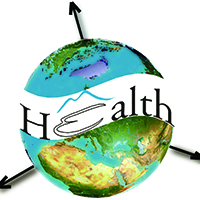Global spreading of Omicron variant of COVID-19

All claims expressed in this article are solely those of the authors and do not necessarily represent those of their affiliated organizations, or those of the publisher, the editors and the reviewers. Any product that may be evaluated in this article or claim that may be made by its manufacturer is not guaranteed or endorsed by the publisher.
Authors
Although two years have passed since the coronavirus disease 2019 (COVID-19) outbreak, various variants are still rampant across the globe. The Omicron variant, in particular, is rapidly gained dominance through its ability to spread. In this study, we elucidated the spatial distribution pattern of Omicron from a global perspective. We used the cumulative number of notified COVID-19 cases per country spanning four weeks up to February 10, 2022, and the proportion of the Omicron variant genomic sequences from the Global Initiative on Sharing Avian Influenza Data (GISAID). The global spatial distribution of Omicron was investigated by analyzing Global & Local Moran’s I and Getis- Ord General G. The spatial weight matrix was defined by combining K-Nearest neighbour and flight connectivity between countries. The results showed that the epidemic is relatively severe in Europe, countries with a high number of Omicron cases and incidence tended to be clustered spatially. In contrast, there are relatively fewer Omicron cases in Asia and Africa, with few hotspots identified. Furthermore, some noted spatial outliers, such as a lowvalue area surrounded by high-value areas, deserve special attention. This study has improved our awareness of the global distribution of Omicron. The findings can provide helpful information for deploying targeted epidemic preparedness for the subsequent COVID-19 variant and future epidemics.
Anselin, L. (2010). Local Indicators of Spatial Association-LISA. Geographical Analysis, 27(2), 93-115. https://doi.org/10.1111/j.1538-4632.1995.tb00338.x
Bogoch, I. I., Creatore, M. I., Cetron, M. S., Brownstein, J. S., Pesik, N., Miniota, J., Tam, T., Hu, W., Nicolucci, A., Ahmed, S., Yoon, J. W., Berry, I., Hay, S. I., Anema, A., Tatem, A. J., MacFadden, D., German, M., & Khan, K. (2015). Assessment of the potential for international dissemination of Ebola virus via commercial air travel during the 2014 West African outbreak. The Lancet, 385(9962), 29-35. https://doi.org/10.1016/S0140-6736(14)61828-6
Callaway E. Heavily mutated Omicron variant puts scientists on alert. Nature. 2021;600:21. doi:https://doi.org/10.1038/d41586-021-03552-w.
CDC, 2021. Science Brief: Omicron (B.1.1.529) Variant | CDC, (n.d.). https://www.cdc.gov/coronavirus/2019-ncov/science/science-briefs/scientific-brief-omicron-variant.html (accessed December 9, 2021)
CDC, 2022. COVID Data Tracker. https://covid.cdc.gov/covid-data-tracker/#variant-proportions. (accessed February 10, 2022)
Chen, J., Wang, R., Gilby, N. B., & Wei, G. (2022). Omicron Variant (B.1.1.529): Infectivity, Vaccine Breakthrough, and Antibody Resistance. Journal of Chemical Information and Modeling, 62(2), 412-422. http://doi.org/10.1021/acs.jcim.1c01451
Franch-Pardo, I., Napoletano, B. M., Rosete-Verges, F., & Billa, L. (2020). Spatial analysis and GIS in the study of COVID-19. A review. SCIENCE OF THE TOTAL ENVIRONMENT, 739, 140033. http://doi.org/10.1016/j.scitotenv.2020.140033
Findlater, A., & Bogoch, I. I. (2018). Human Mobility and the Global Spread of Infectious Diseases: A Focus on Air Travel. Trends in Parasitology, 34(9), 772-783. https://doi.org/10.1016/j.pt.2018.07.004
Getis, A., & Ord, J. K. (2010). The Analysis of Spatial Association by Use of Distance Statistics. Geographical Analysis, 24(3), 189-206. https://doi.org/10.1111/j.1538-4632.1992.tb00261.x
GISAID, 2022 Tracking of variants. GISAID. 2022. https://www.gisaid.org/hcov19-variants/. ( Accessed February 10, 2022)
Gushulak, B. D., & MacPherson, D. W. (2000). Population mobility and infectious diseases: The diminishing impact of classical infectious diseases and new approaches for the 21st century. Clinical Infectious Diseases, 31(3), 776-780. https://doi.org/10.1086/313998
He, X., Hong, W., Pan, X., Lu, G., & Wei, X. (2021). SARS-CoV-2 Omicron variant: Characteristics and prevention. MedComm, 2(4), 838-845. https://doi.org/10.1002/mco2.110
Huang, Y., Yang, S., Zou, Y., Su, J., Wu, C., Zhong, B., & Jia, P. (2022). Spatiotemporal epidemiology of COVID-19 from an epidemic course perspective. Geospatial Health, 17(s1) http://doi.org/10.4081/gh.2022.1023
Islam, A., Sayeed, M. A., Rahman, M. K., Ferdous, J., Islam, S., & Hassan, M. M. (2021). Geospatial dynamics of COVID-19 clusters and hotspots in Bangladesh. Transboundary and Emerging Diseases, 68(6), 3643-3657. http://doi.org/10.1111/tbed.13973
Kalia, K., Saberwal, G., & Sharma, G. (2021). The lag in SARS-CoV-2 genome submissions to GISAID. Nature Biotechnology, 39(9), 1058-1060. https://doi.org/10.1038/s41587-021-01040-0
Kannan, S. R., Spratt, A. N., Sharma, K., Chand, H. S., Byrareddy, S. N., & Singh, K. (2022). Omicron SARS-CoV-2 variant: Unique features and their impact on pre-existing antibodies. JOURNAL OF AUTOIMMUNITY, 126, 102779. http://doi.org/10.1016/j.jaut.2021.102779
Kraemer, M. U. G., Yang, C.-H., Gutierrez, B., Wu, C.-H., Klein, B., Pigott, D. M., Open COVID-19 Data Working Group, du Plessis, L., Faria, N. R., Li, R., Hanage, W. P., Brownstein, J. S., Layan, M., Vespignani, A., Tian, H., Dye, C., Pybus, O. G., & Scarpino, S. V. (2020). The effect of human mobility and control measures on the COVID-19 epidemic in China. Science, 368(6490), 493-497. https://doi.org/10.1126/science.abb4218
Krisztin, T., Piribauer, P., & Wögerer, M. (2020). The spatial econometrics of the coronavirus pandemic. Letters in Spatial and Resource Sciences, 13(3), 209-218. https://doi.org/10.1007/s12076-020-00254-1
Li H et al. Spatial statistics analysis of Coronavirus Disease 2019 (Covid-19) in China, 2020. Geo Health 15:11-18. doi: 10.4081/gh.2020.867. DOI: https://doi.org/10.4081/gh.2020.867
Moran PAP, 1950. Notes on Continuous Stochastic Phenomena. Biometrika 371:17-23. doi:10.2307/2332142. JSTOR 2332142.
Sun, X., Wandelt, S., & Zhang, A. (2021). On the degree of synchronization between air transport connectivity and COVID-19 cases at worldwide level. Transport Policy, 105, 115-123. https://doi.org/10.1016/j.tranpol.2021.03.005
Wang, W., Tang, J., & Wei, F. (2020). Updated understanding of the outbreak of 2019 novel coronavirus (2019-nCoV) in Wuhan, China. JOURNAL OF MEDICAL VIROLOGY, 92(4), 441-447. http://doi.org/10.1002/jmv.25689
Zaki, A. M., van Boheemen, S., Bestebroer, T. M., Osterhaus, A. D. M. E., & Fouchier, R. A. M. (2012). Isolation of a Novel Coronavirus from a Man with Pneumonia in Saudi Arabia. New England Journal of Medicine, 367(19), 1814-1820. https://doi.org/10.1056/NEJMoa1211721
Zhang, L., Li, Q., Liang, Z., Li, T., Liu, S., Cui, Q., Nie, J., Wu, Q., Qu, X., Huang, W., & Wang, Y. (2022). The significant immune escape of pseudotyped SARS-CoV-2 variant Omicron. Emerging Microbes & Infections, 11(1), 1-5. http://doi.org/10.1080/22221751.2021.2017757
How to Cite

This work is licensed under a Creative Commons Attribution-NonCommercial 4.0 International License.








